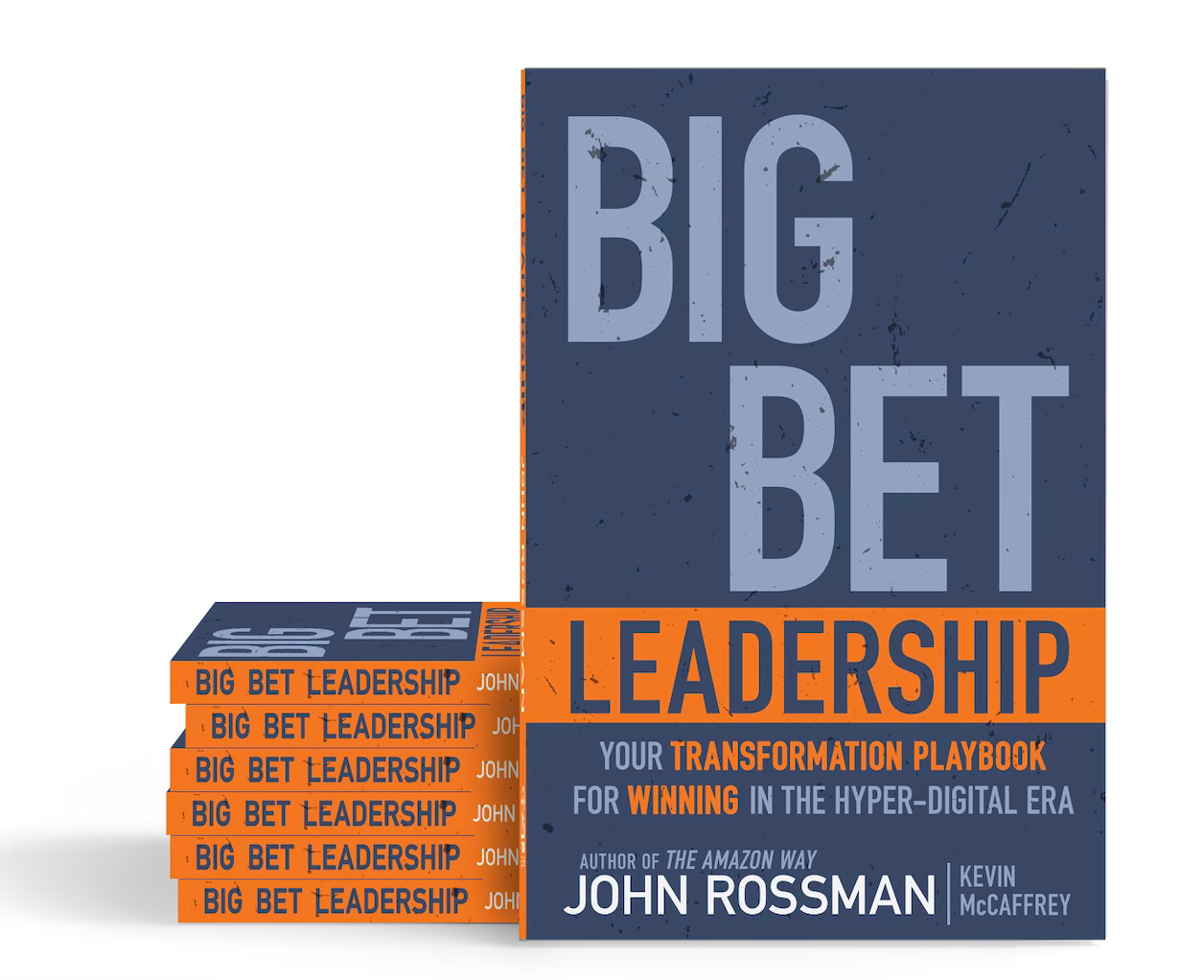The Digital Leader Newsletter — Strategies and Techniques for Change Agents, Strategists, and Innovators.
Winning should be at the heart of every strategy.
— A.G. Lafley & Roger L. Martin
There’s something fundamentally honest in Herm Edwards’ infamous rant: “You play to win the game!” Yet many teams and leaders shy away from this truth. Mediocrity is often the accepted target.
While he was talking about sports, it resonates powerfully in life, careers, and business. In a world where incremental changes can keep the lights on, they won’t win the day they do not put you in a position to compete for championships.
It’s the calculated risks—the transformative plays and players—that separate the leaders from the pack. It's about high-ambition entrepreneurial bold moves that have the potential to redefine the trajectory of your organization.
(note: I encourage you to watch the <1 minute video HERE. You will smile, and reflect.)
THE UNCOMFORTABLE TRUTH
In business, as in sports, the game is not won by those who avoid risk, but by those who strategically embrace it. In today's hyper-digital era, the path to winning is through making bold, transformative moves and innovations that shift your organization's capabilities and market position. These are the Big Bets—investments in innovation, technology, or transformation that, if successful, will deliver an outsized return.
But there is a right way to make these bets and many wrong ways to make these bets. The right path is built from the fundamental understanding that the leadership needed for systematic big bet success is familiar but dramatically different than incremental projects. True transformations need an agile experiment-based approach to prove and adjust the high-risk factors before making big commitments while finding ways to increase the ambition.
Instead of pretending that Big Bets are not needed or accepting high failure rates with marginal improvements, Big Bet Leadership enables a dramatic reduction of the failure risk while simultaneously increasing the size of the prize.
— Page 13, Big Bet Leadership by John Rossman and Kevin McCaffrey
How to Play to Win
Here’s the fundamentals of your playbook to play to win. These are built from the three critical habits of systematic Big Bet Legends — Create Clarity, Maintain Velocity , and Accelerate Risk & Value.
1. Big Bet Legends Create a Winning Vector
If you're playing to win, your Big Bet must have a clear vector. A vector is the direction in which all your efforts are pointed, and aligning your team around a clear set of outcomes.
“Clarity” is the foundation upon which any Big Bet must be built. We call it a Big Bet Vector and it is the fundamental framework to use across the lifecycle of a transformation.
Take Amazon's Marketplace, for example—a massive Big Bet that not only broadened Amazon's reach but transformed the entire retail ecosystem. When I worked on this project in 2002, what we needed was a clear and shared understanding of both the challenge we were tackling and the transformative impact we were aiming to deliver.
The "what sucks" question we frequently asked led us to identify pain points that sellers and customers were experiencing on other platforms. From there, we built a plan that aligned the entire team and clarified the goal. That same principle applies to any Big Bet you’re leading today—you need clarity on the outcomes and a cohesive team aligned to achieve them.
2. Big Bets Require a Bias For Action
The second critical habit is the need for velocity—getting to "done" fast and iterating along the way. Playing to win isn’t about sitting in strategy meetings, debating every potential risk and world-class powerpoint slides. It’s about moving forward with clear thinking, conviction and avoiding analysis paralysis. You have to take risks, yes, but those risks must be calculated, and you must commit to learning from every test.
Big Bets die from analysis paralysis. Spending too much time in the planning stage kills momentum and becomes a major source of risk. In football, if you spend too much time in the huddle, the play clock runs out. Similarly, in business, opportunities slip away while you’re overthinking the next move.
Playing to win demands action. You get on the field, run the play, and adjust as you go. This doesn’t mean you ignore risks—it means you make a habit of identifying, featuring, and prioritizing the risks upfront, tackling the critical uncertainties head-on.
3. The Risks Are High—But So Is the Value
Why take the risk? Because the alternative is mediocrity and decline. A critical habit of Big Bet Legends is prioritizing risk and value. In playing to win, leaders focus on the high-value elements and assumptions that differentiate their Big Bet from the status quo. There is no point in betting big if your upside potential isn’t transformational.
The “risk-forward mindset” is a core theme in Big Bet Leadership. It’s not about avoiding risks, but about shining a light on them early and often. You’re constantly asking, “What are the key high-value risks and assumptions, and how can we mitigate them early and cheaply?” It’s about setting up experiments, learning quickly, and either doubling down or pivoting as necessary — with great decision hygiene.
4. Playing it Safe is the Real Risk
Playing “not to lose” is the fastest way to fall behind. When leaders take the safe route, they fail to innovate beyond small increments. They might avoid short-term discomfort, but they miss out on the long-term rewards that come from bold decisions. As emphasized in *Big Bet Leadership*, leaders who thrive are those willing to take calculated risks, make decisive moves, and embrace the ambiguity of transformations.
It’s the very things that make the business successful, the founder bets, that then at some point in the company's second act, hold it back. You have all this muscle memory as a company of relying on founder maverick acts.
The other thing is that most founder-led companies are entrepreneurially driven. It's not that they're not following the rules—they're making the rules, especially if you're creating an industry that did not exist. When a founder leaves, the company loses not only the entrepreneurial DNA but also of the ability to be on offense.
And the worst thing that a company can do, like a sports team, is start playing defense because you're afraid to fail. That is a disease. Not unlike another disease which has happened in Starbucks, which is hubris.
I think, over time, that has happened at Starbucks.
— Howard Schultz on Starbucks
"It Nevers Ends Well" -- Howard Schultz on Starbucks and The Innovators Dilemma
Strategies and Techniques for Change Agents, Strategists, and Innovators
Look at companies like Netflix, Apple, and Tesla. These organizations didn’t become leaders by playing it safe. They made bets—huge ones—that could have easily failed, and at times did fail, but they ended up revolutionizing their industries. Netflix’s move into original content was a bet that put billions on the line. Tesla bet that electric vehicles could not only be cool but would become mainstream. These weren’t incremental changes—they were transformative plays.
5. You Can’t Win Without a Team
Finally, no championship is won without the right talent and team leadership. Just as a coach relies on the collective efforts of players, in business, you need the full support of your team and stakeholders. One of the critical success factors in leading a Big Bet is ensuring you have a dedicated and aligned team with the right skill sets. The single-threaded leader is fully obsessed on the success of the Big Bet and is the quarterback for the team. Build from there.
Building the right team around your Big Bet ensures the diversity of skills, experience, independence, and perspectives to overcome obstacles. But this only works if the entire team is aligned toward the same goal and is as invested in the outcome as you are.
Don’t Settle for Less
Herm Edwards was right: “You play to win the game. Hello!” Embrace this certainty — market advantages are short-lived, and getting shorter. This is solved by the uncertainty of making Big Bets.
Playing it safe leads to mediocrity and irrelevance. Those who win are those who make bold, strategic bets that have the potential to redefine their business.
If you’re a leader facing the decision to go big or play it safe, remember: playing to win is not about reckless risk—it’s about taking the calculated bets that will propel you to a future where your organization isn’t just surviving but thriving.
Big Bet Leadership concludes with this last recommendation — be an active skeptic.
Adopt the mindset of an active skeptic, someone who applies meticulous scrutiny before committing to a concept. Active skeptics are optimistic about innovating, but force proof-of-concept before commitmitting. They dedicate time and resources to test the feasibility and potential business value in a systematic manner — again, and again, and again.
— Page 165, Big Bet Leadership by John Rossman and Kevin McCaffrey
Get your copy of Big Bet Leadership HERE, or contact me for bulk sales or author signed copies.
Onward!
John
About The Digital Leader Newsletter
John Rossman is a keynote speaker, innovation coach, and strategy advisor. The Digital Leader Newsletter is a weekly coaching session focused on customer-centricity, innovation, and strategy. We deliver practical theory, examples, tools, and techniques to help you build better strategies, plans, and solutions—but most of all, to think and communicate better.







